Ba4.9
Let's now try to summarize my current perceptions of glyph line Ba4.
 |
 |
 |
 |
 |
 |
 |
|
Ba4-1 (5 * 5
* 5) |
Ba4-2 (200 -
74) |
Ba4-3 |
Ba4-4 (2 * 64) |
Ba4-5 |
Ba4-6 (130) |
Ba4-7 |
|
Kua rere te tagata |
ki to mata - o to rima |
eko hoko - ki to pepe |
e tagata oho |
ki toona mea |
mai tae hoi ki te henua
kua vari koia |
|
Pepe. 1. A sketch. 2. Bench, chair,
couch, seat, sofa, saddle; here pepe,
mau pepe, to saddle; noho pepe, a
tabouret. Pepepepe, bedstead. 3. Pau.:
butterfly. Ta.: pepe, id. Mq.: pepe,
id. Sa.: pepe, id. Ma.: pepe, a
moth; pepererau, fin, Mgv.: pererau,
wing. Ta.: pereraru, id. Ma.: parirau,
id. Harepepe, kelp. Here pepe, to
saddle. Churchill. Sa.: pepe, a
butterfly, a moth, to flutter about. Nukuoro,
Fu., Niuē, Uvea,
Fotuna, Nuguria, Ta., Mq.: pepe,
a butterfly. Ma.: pepe,
a grup, a moth; pepepepe,
a butterfly; pepeatua,
a species of butterfly. To.: bebe,
a butterfly. Vi.: mbèbè,
a butterfly. Rotumā: pep,
id. Churchill 2. Mq.: Pepepepe,
low, flat. Ha.: pepepe, id. Churchill.
Vari. 1. Menstruation, period (also:
tiko). 2. To tack, to veer (nautical);
ku-vari-mai-á te miro, the boat arrives,
have veered [around Rano Kau]. Vanaga.
About, circumference, to turn in a circle;
hakavari, pliant, to bend, square;
varivari, about, to go around; vavari,
a garland; varikapau, circumference, to
surround, a compass, to admire; hiriga
varikapau, to go in a ring; pa varikapau,
to close in; varitakataka (vari-taka
3) to surround. Churchill. Pau.: Vari,
marsh, mire, dirt. Ta.: vari, dirt, mud.
Rar.: vari, mud. Churchill. Mgv.: Vari,
paste well diluted. Mq.: vaivai, to
dilute, to thin. Ha.: waliwali, soft,
pasty. Churchill. |
|
CLOSE TO THE
FULL MOON: |
|
AL DAFĪRAH (Tuft) =
β
Com. Ber.
(199.4)
*158.0 = *199.4 - *41.4 |
σ Virginis (200.4)
*159.0 = *200.4 - *41.4
|
γ
Hydrae (201.0),
ι
Centauri (201.4)
*160.0 = *201.4 - *41.4
|
Al Simāk-12 (Lofty) /
Chitra-14 (Bright One) /
Horn-1 (Crocodile) /
Sa-Sha-Shirū-20
(Virgin's Girdle) /
ANA-ROTO-3 (Middle pillar)
MIZAR =
ζ
Ursae Majoris (202.4),
SPICA =
α
Virginis,
ALCOR = 80 Ursae Majoris
(202.7)
SADALMELIK
(α Aquarii)
*161.0 = *202.4 - *41.4 |
71 VIRGINIS
(203.6) |
No star listed (204) |
HEZE = ζ Virginis
(205.0),
SOUTHERN PINWHEEL GALAXY = M83 Hydrae
(205.7) |
 |
|
Oct 6 |
7 (280) |
8 |
9 (366 - 84) |
10 |
11 (466 - 182) |
12 (285) |
|
CLOSE TO THE SUN: |
|
April 6 (461) |
7 (280 + 182) |
8 |
9 (364 + 100) |
10 (283 - 183) |
11 (466) |
12 |
|
Al Batn Al Hūt-26 (Belly of the Fish) /
Revati-28 (Prosperous) /
1-iku (Field Measure)
MIRACH (Girdle) =
β
Andromedae,
KEUN MAN MUN (Camp's South Gate) =
φ
Andromedae
(16.0),
ANUNITUM =
τ
Piscium
(16.5),
REVATI (Abundant) =
ζ
Piscium
(16.9)
REGULUS
(α Leonis) |
ν
Phoenicis (17.4), κ Tucanae (17.6)
*159.0 + *182.0 = 341.0 |
No
star listed (18) |
ADHIL (Garment's Train) = ξ Andromedae
(19.3),
θ
Ceti (19.7) |
KSORA (Knee) =
δ
Cassiopeiae
(20.1),
ω
Andromedae (20.6),
γ
Phoenicis (20.8) |
δ Phoenicis (21.5) |
υ
Andromedae (22.9) |
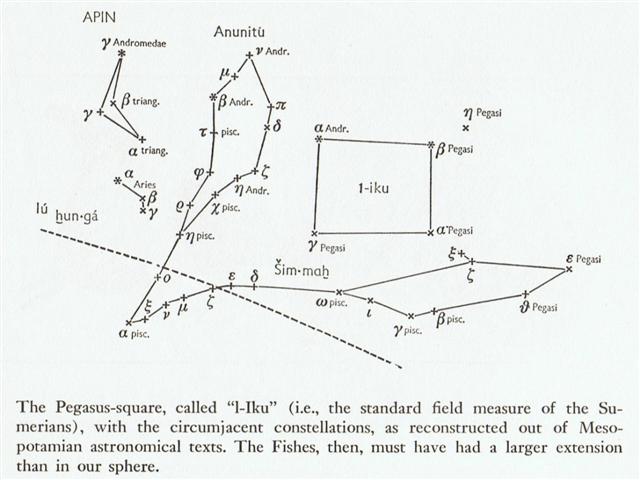 |
|
FEBR 1 (32) |
2 |
3 |
4 (464 - 64) |
5 (100 - 64) |
6 |
7 |
Line Ba4 is beginning 5 days after
η Andromedae at the back side of the
Northern Fish, viz. at the Girdle (the middle) of Andromeda:
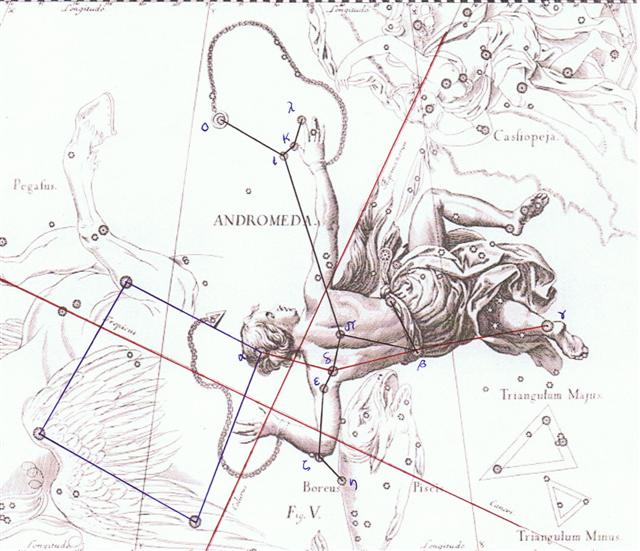
 |
 |
 |
 |
 |
 |
 |
|
Ba3-31 (118) |
Ba3-32 |
Ba3-33 |
Ba3-34 |
Ba3-35 |
Ba3-36 |
Ba3-37 |
|
ki te tauuru ko te tagata
kua oho |
ki te henua |
ko te tagata kua oho |
ki tona agaaga |
e tagata e rae ka hoko |
ki to ou |
|
ι
Crucis (192.2),
β
Muscae (192.5),
MIMOSA =
β
Crucis
(192.9) |
No
star listed (193) |
κ
Crucis (194.4),
ψ
Virginis (194.5),
μ
Crucis,
λ
Crucis (194.6),
ALIOTH (Fat Tail) =
ε
Ursae Majoris,
ι
Oct.
(194.8)
*153.0 = *194.4 - *41.4 |
MINELAUVA =
δ
Virginis
(195.1),
COR CAROLI = α Canum Ven.
(195.3) |
δ
Muscae (196.5) ,
VINDEMIATRIX (Grape Gatherer) =
ε
Virginis
(196.8) |
13h (197.8)
ξ¹ Centauri (197.1), ξ² Centauri (197.9) |
APAMI-ATSA (Child of Waters) =
θ
Virginis,
ψ
Hydrae (198.5),
DIADEM = α Com. Ber.
(198.9) |
|
CLOSE TO THE SUN: |
|
ξ
Phoenicis (9.0),
ρ
Tucanae (9.1),
DENEB KAITOS (Tail of the Sea Beast) =
β
Ceti,
η
Phoenicis (9.4), AL NITHĀM (String of Pearls) =
φ¹
Ceti
(9.6)
*333.0 = *9.4 - *41.4 |
ACHIRD (Woman with Luminous Rays) =
η
Cassiopeiae
(10.7) |
Legs-15 (Wolf)
ν
Andromedae (11.0),
φ²
Ceti (11.1),
ρ
Phoenicis (11.2),
η
Andromedae (11.4)
*335.0 = *11.4 - *41.4 |
CIH (Whip) = γ Cassiopeiae, λ Tucanae (12.4),
φ³ Ceti (12.6), μ Andromedae (12.8)
*336.0 = *12.4 - *41.4 |
φ4 Ceti (13.2) |
No star listed (14) |
1h
(15.2)
β Phoenicis (15.1), υ Phoenicis, ι Tucanae
(15.6), η Ceti, ζ Phoenicis (15.7) |
|
... At the
beginning of 44 B.C. - when Ceasar was still
alive - the Senate decided to raise statues of
him in all the temples and to sacrifice to him
on his birthday in the month Quintilis,
which in honour of him was renamed July. He was
raised to the status of a god (among the other
gods of the state) under the name Jupiter
Julius. Marcus Antonius, who this year was
consul together with Caesar, became high priest
and responsible for the ceremonies. In the
middle of February, at the time of the old feast
of Lupercalia [Lupus = Wolf], he
ran around naked and whipped the Roman ladies
with thongs made from goat-skin [februa],
in order to promote their fertility ... |
Which means there were 10 days from the Wolf (the
Opener of the Way, Upwaut) to
Ba4-6 (130), from the henua glyph Ba3-33 to the
henua glyph Ba4-6.
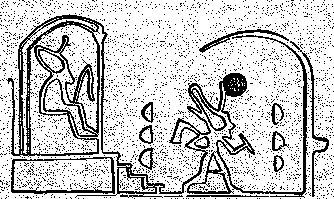
... The king, wearing now a short,
stiff archaic mantle, walks in a grave and stately
manner to the sanctuary of the wolf-god Upwaut,
the 'Opener of the Way', where he anoints the sacred
standard and, preceded by this, marches to the palace
chapel, into which he disappears. A period of time
elapses during which the pharaoh is no longer manifest.
When he
reappears he is clothed as in the Narmer palette,
wearing the kilt with Hathor belt and bull's tail
attatched. In his right hand he holds the flail scepter
and in his left, instead of the usual crook of the Good
Shepherd, an object resembling a small scroll, called
the Will, the House Document, or Secret of the Two
Partners, which he exhibits in triumph, proclaiming to
all in attendance that it was given him by his dead
father Osiris, in the presence of the earth-god
Geb. 'I have run', he cries, 'holding the Secret
of the Two Partners, the Will that my father has given
me before Geb. I have passed through the land and
touched the four sides of it. I traverse it as I
desire.' ...
Regulus (the Little King) culminated (at 21h)
in April 6 (395 + 96 = 461), and around half a year
later (282 - 96 = 186 = 183 + 3) was the culmination
for the opposite King, viz. the Lucky one (Sad-al-melik).
|
 |
4 |
 |
4 |
 |
|
April 1
(91) |
REGULUS |
April 11 (466) |
|
η
Andromedae (11.4) |
April 6 (461) |
Ba4-6 (130) |
In April 13 (4-13 → 413
= 14 * 29½ = 14 synodic lunar months) the Sun
reached the End of the River (Achernar), and
3 days later was Polaris.
 |
 |
 |
 |
 |
 |
 |
|
Ba4-8 (132) |
Ba4-9 |
Ba4-10 |
Ba4-11 |
Ba4-12 (136) |
Ba4-13 |
Ba4-14 |
|
ki to tama
- e ko manu huki ki to toki |
eko te tagata
kua oho |
kua rama - ki
to pua |
e tagata
aha e rua mai tae e oho ki te tagata |
tuu i te
kihikihi - i te henua - kua moe -
kua hakarao ki tona tamaiti |
|
Tama.
1. Shoot (of plant),
tama miro, tree shoot; tama
tôa, shoot of sugarcane. 2.
Poles, sticks, rods of a frame. 3.
Sun rays. 4. Group of people
travelling in formation. 5. To
listen attentively (with ear,
tariga, as subject, e.g. he
tama te tariga); e-tama
rivariva tokorua tariga ki taaku kî,
listen carefully to my words.
Tamahahine, female. Tamahine
(= tamahahine), female, when
speaking of chickens: moa
tamahine, hen. Tamâroa,
male. Vanaga. 1. Child. P Pau.:
tama riki, child. Mgv.: tama,
son, daughter, applied at any age.
Mq.: tama, son, child, young
of animals. Ta.: tama, child.
Tamaahine (tama 1 -
ahine), daughter, female.
Tamaiti, child P Mq.: temeiti,
temeii, young person. Ta.:
tamaiti, child. Tamaroa,
boy, male. P Mgv.: tamaroa,
boy, man, male. Mq.: tamaóa,
boy. Ta.: tamaroa, id. 2. To
align. Churchill. In the Polynesian
this [tama na, father in the
Efaté language] is distinguished
from táma child by the accent
tamā
or by the addition of a final
syllable which automatically secures
the same incidence of the accent,
tamái,
tamana
... Churchill 2.
Rama.
Torch. Fischer. T. Torch.
Henry.
Pua. 1. A
zingiberacea (plant of which few
specimens are left on the island).
2. Flower: pua ti, ti flower,
pua taro, taro flower, pua
maúku pasture flower; pua
nakonako, a plant which grows on
steep slopes and produce red, edible
berries. 3. Pua tariga (or
perhaps pu'a tariga),
anciently, hoops put in earlobes. 4.
The nanue fish when young and
tender. Puapua, summit, top,
upper part; te puapua o te maúga,
the top of the mountain; te
puapua kupega, the upper part of
a fishing net. Vanaga. Pu'a.
1. (Modern form of pu'o), to
cover up something or oneself, to
put on; ka-pu'a te ha'u, put
on your hat; ka-pu'a-mai te nua,
cover me up with a blanket. 2.
To respond to the song of the first
group of singers; to sing the
antistrophe; he-pu'a te tai.
3. To help; ka-pu'a toou rima ki
a Timo ite aga, help Timothy
with the work. 4. Pu'a-hare,
to help a relative in war or in any
need; ka-oho, ka-pu'a-hare korua,
ko ga kope, go, give your
relative a hand, lads. 5. To speak
out in someone's favour; e
pu'a-mai toou re'o kia au, speak
in my favour, intercede for me.
Pu'apu'a, to hit, to beat.
Vanaga. 1. Flower, ginger, soap;
pua mouku, grass. 2. To grease,
to coat with tar, to pitch; pua
ei meamea, to make yellow.
Puapua, a piece of cloth. Mgv.:
pua, a flower, turmeric,
starchy matter of the turmeric and
hence soap. Mq.: pua, a
flower, soap. Ta.: pua, id.
Ma.: puapua, cloth wrapped
about the arm. Churchill. |
|
CLOSE TO THE FULL MOON: |
|
ε Centauri (206.3),
κ Oct. (206.4)
*165.0 = *206.4 - *41.4 |
No star listed (207) |
τ
Bootis (208.2),
BENETNASH (Leader of the Daughters
of the Bier) =
η
Ursae Majoris
(208.5),
ν
Centauri (208.7),
μ
Centauri,
υ
Bootis (208.8) |
No star listed (209) |
MUPHRID (Solitary Star) = η Bootis
(210.1), ζ Centauri (210.3) |
φ Centauri (211.0), υ¹ Centauri
(211.1), υ² Centauri (211.8), τ
Virginis (211.9) |
AGENA (At the Knee) =
β
Centauri
(212.1),
θ
Apodis (212.5),
THUBAN (Dragon) =
α
Draconis
(212.8) |
|
Oct 13 |
14 |
15 (288) |
16 |
17 |
18 |
19 (292) |
|
CLOSE TO THE SUN: |
|
4-13 |
14 (104) |
15 (288 - 183) |
16 |
17 (107) |
18 |
April 19 |
|
ACHERNAR (End of the River) = α
Eridani
(23.3),
χ
Andromedae (23.6),
τ
Andromedae (23.9) |
ALSEIPH (Scimitar) =
φ
Persei
(24.5),
τ
Ceti (24.7) |
No star listed (25) |
ANA-NIA-10 (Pillar-to-fish by)
χ Ceti (26.1),
POLARIS = α Ursae Minoris,
BATEN KAITOS = ζ Ceti
(26.6),
METALLAH = α Trianguli
(26.9) |
Al Sharatain-1 /
Ashvini-1 /
Bond-16 (Dog) /
Mahrū-sha-rishu-ku-1 (Front of the
Head of Ku)
SEGIN =
ε
Cassiopeia, MESARTHIM =
γ
Arietis,
ψ
Phoenicis (27.2),
SHERATAN (Pair of Signs) =
β
Arietis,
φ
Phoenicis (27.4)
*351.0 = *27.4 - *41.4 |
ι Arietis (28.0), λ Arietis (28.2),
υ Ceti (28.8) |
ALRISHA (The Knot) = α Piscium,
χ Phoenicis (29.2),
ε Trianguli (29.4),
ALAMAK
(Caracal) = γ Andromedae
(29.7)
*353.0 = *29.4 - *41.4 |
|
FEBR 8 (39) |
9 |
10 |
11 (42) |
12 |
13 |
2-14 (45) |
Day 2-14 was All Hearts' Day and in the
Golden Age of the Bull the Sun would here have
reached the Knot (Alrisha).
 |
 |
 |
 |
 |
 |
 |
 |
|
Ba4-15 |
Ba4-16 |
Ba4-17 |
Ba4-18 |
Ba4-19 |
Ba4-20 |
Ba4-21 (145) |
Ba4-22 |
|
kua huki ko te
manu utu huki a ruga o te tagata mai tae
rere i te toki |
e kua tupu ko te pua |
e kua tuu ko te
vaero kua oho |
ki to kihikihi - ko
koe i te henua |
kua moe - ki
tona tamaiti e manu gutu huki a ruga |
|
Vaero.
Chicken's long tail feather;
lobster's antenna (vaero ura).
Vanaga. Tail of a kite, tail of a bird (uero).
T Pau.: tuavaero, rump; kaero,
tail. Mgv.: vero, tail. Mq.:
veó, id. Ta.: aero, id.
Churchill.
Gutu. 1. Lips,
mouth, beak, snout (goutu);
gutu ahu, swollen lip; gutu hiti,
thick lip; gutu mokomoko, pointed
lip; gutu no, vain words;
gutu pakapaka, scabbed lips;
gutu raro, lower lip; gutu ruga,
upper lip. Gutugutu, snout. P
Pau.: gutu, lip, beak, bill.
Mgv.: gutu, the chin, the mouth
of a fish. Mq.: nutu, beak,
snout. Ta.: utu, lip, mouth,
beak, snout. Gutupiri,
attentively. Gututae,
attentively; gututae mekenu, a
small mouth. Gututika, tattoing
on the lips. 2. Pau.: Gutuafare,
to save, to economize. Ta.: utuafare,
family, residence. 3. Pau.: Guturoa,
to grimace, to pout. Mgv.: guturoa,
to grimace. Churchill.
Ruga.
Upper part, higher part; when
used as a locative adverb, it is
preceded by a preposition: i ruga,
above, on; ki ruga, upwards,
mai ruga, from above. When used
with a noun the same preposition is
repeated: he-ea te vî'e Vakai, he-iri
ki ruga ki te Ahu ruga, the woman
Vakai went, she climbed Ahu Runga.
Ruga nui, high, elevated, lofty:
kona ruga nui, high place, elevated
position, high office; mana'u ruga
nui, elevated thoughts. Vanaga. High
up; a ruga, above; ki ruga,
on, above, upon; ma ruga, above;
o ruga, upper; kahu o ruga,
royal (sail); ruga iho,
celestial. Hakaruga, to
accumulate, to draw up. P Pau., Mgv.:
ruga, above. Mq.: úna, úka,
id. Ta.: nua, nia, id.
Churchill. |
|
CLOSE TO THE FULL MOON: |
|
Oct 20 |
21 |
22
(295) |
23 |
24 |
25 |
26 |
27
(300) |
|
14h (213.1)
π Hydrae, χ
Centauri (213.0),
MENKENT (Shoulder of the Centaur) =
θ
Centauri
(213.1) |
Neck-2 (Dragon)
ASELLUS TERTIUS (3rd Ass Colt) =
κ
Bootis,
κ
Virginis, 14 Bootis
(214.8)
|
Al Ghafr-13 (The Cover) /
Svāti-15 (Very Good) /
TAHUA-TAATA-METUA-TE-TUPU-MAVAE-6 (a
pillar to stand by)
15 Bootis
(215.2),
ARCTURUS = α
Bootis (215.4),
ASELLUS SECUNDUS (2nd Ass Colt) =
ι
Bootis
(215.5),
SYRMA (Train of the Virgin's Robe) =
ι
Virginis,
λ
Bootis (215.6),
η
Apodis (215.8)
*174.0 = *215.4 - *41.4 |
ι Lupi,
18 Bootis
(216.3),
KHAMBALIA (Crooked-Clawed) = λ Virginis
(216.4),
υ Virginis (216.5), ψ Centauri (216.6),
ε Apodis (216.8)
*175.0 = *216.4 - *41.4 |
ASELLUS PRIMUS (1st Ass Colt) =
θ
Bootis
(217.8) |
τ
Lupi,
δ
Oct. (218.1),
φ
Virginis (218.7)
FOMALHAUT (α Piscis Austrini) |
σ
Lupi (219.1),
ρ
Bootis (219.5),
HARIS (Keeper) =
γ
Bootis
(219.7) |
σ Bootis (220.2),
η Centauri (220.4)
*179.0 = *220.4 - *41.4 |
|
CLOSE TO THE SUN: |
|
4-20 (110) |
April 21 |
22 |
23 |
24 |
25 |
26 |
27 |
|
Arku-sha-rishu-ku-2 (Back of the Head of
Ku)
2h (30.4)
κ
Arietis (30.3),
HAMAL (Sheep) =
α
Arietis
(30.5)
ALKES (α
Crateris) |
DELTOTUM = β Trianguli
(31.2), ι Trianguli (31.7), η Arietis
(31.9) |
ξ¹ Ceti (32.1) |
γ,
δ
Trianguli (33.0),
χ
Persei (33.2),
10 Trianguli
(33.5),
θ
Arietis (33.3),
MIRA
(Astonishing) =
ο
Ceti
(33.7) |
No star listed (34) |
ξ Arietis (35.0),
ρ Ceti (35.4),
12 Trianguli
(35.8), ξ² Ceti (35.9)
*360.0 = *35.4 - *41.4 |
σ Ceti (36.9) |
ν Ceti (37.9) |
|
FEBR 15 |
16 |
17 |
18 |
19 (50) |
20 |
21 |
22 |
When the Full Moon currently was at Toliman it
implied this was where the Sun during the ancient time of the Bull
would have had his end station (TERMINALIA):
 |
 |
 |
|
Ba4-23 (227 - 80 = 221 - 74) |
Ba4-24 (148) |
Ba4-25 → 210 = 149 +
61 |
|
kua rere ki te toki |
e tagata -
hakahunu kua tupu te kihikihi i te henua |
|
Tupu.
1. Shoot, sprout, bud; to
sprout, to bud. 2. Pregnant: vî'e
tupu (o te poki); to be conceived
(of fetus in its mother's womb):
he-tupu te poki i roto i te kopú o toona
matu'a. Vanaga. To grow, to sprout,
to germinate, to come forth, to
conceive, pregnant, germ; mea tupu,
plant; tupu ke avai, of rapid
growth; tupu horahorau,
precocious; hakatupu, to produce,
to stimulate growth, to excite. P Pau.:
fakatupu, to raise up, to create.
Mgv.: tupu, to grow, to conceive,
to be pregnant. Mq.: tupu, to
grow, to sprout, to conceive. Ta.:
tupu, to grow, to sprout. Churchill.
Mgv.: Tupu, the best or worst,
used of men or of bad qualities. Sa.:
tupu, king. Ma.: tupu, social
position, dignity. Churchill.
Kihikihi, lichen;
also: grey, greenish grey, ashen.
Vanaga. Kihikihi, lichen T, stone
T. Churchill. The
Hawaiian day was divided in three
general parts, like that of the early
Greeks and Latins, - morning, noon, and
afternoon - Kakahi-aka, breaking
the shadows, scil. of night;
Awakea, for Ao-akea, the
plain full day; and Auina-la, the
decline of the day.
The lapse of the
night, however, was noted by five
stations, if I may say so, and four
intervals of time, viz.: (1.) Kihi,
at 6 P.M., or about sunset; (2.) Pili,
between sunset and midnight; (3) Kau,
indicating midnight; (4.) Pilipuka,
between midnight and surise, or about 3
A.M.; (5.) Kihipuka,
corresponding to sunrise, or about 6
A.M. ... (Fornander)
 |
|
CLOSE
TO THE FULL MOON: |
|
Oct
28 (301) |
29 |
30 |
|
ρ Lupi (221.0),
TOLIMAN = α
Centauri
(221.2), π Bootis (221.8), ζ Bootis
(221.9) |
31 Bootis
(222.0),
YANG MUN (South Gate) =
α
Lupi
(222.1),
RIJL AL AWWA (Foot of the Barker) =
μ
Virginis
(222.5),
ο
Bootis (222.9) |
IZAR (Girdle) =
ε
Bootis
(223.0),
109 Virginis,
α
Apodis (223.3),
μ
Librae (223.8) |
 |
|
CLOSE TO THE SUN: |
|
April
28 (118 = 4 * 29½) |
29
(484 = 365 + 119) |
30
(485 = 425 + 60) |
|
ν Arietis (38.5), δ, ε Ceti (38.8) |
μ
Arietis (39.4), HEAD OF THE FLY = 35
Arietis
(39.6),
KAFFALJIDHMA (Part of a Hand) =
γ
Ceti,
θ
Persei (39.8)
*363.0
= *39.4 - *41.4 |
π
Ceti,
ο
Arietis (40.0),
ANGETENAR (Bend in the River) =
τ¹
Eridani,
μ Ceti (40.2),
RIGHT WING = 39 Arietis
(40.9) |
|
→
TERMINALIA |
FEBR
24 (365 + 55 = 420) |
25 (120 - 64 = 56) |
The Foot (Rijl) of the Barker in a way
resembles the Foot (Rigel)
of Orion.
μ
Virginis (*225) - *78 (Rigel) = *147 (=
*227 - *80). And
3 days after
μ
Virginis was the Star (Kakkab,
β Ursae Minoris):
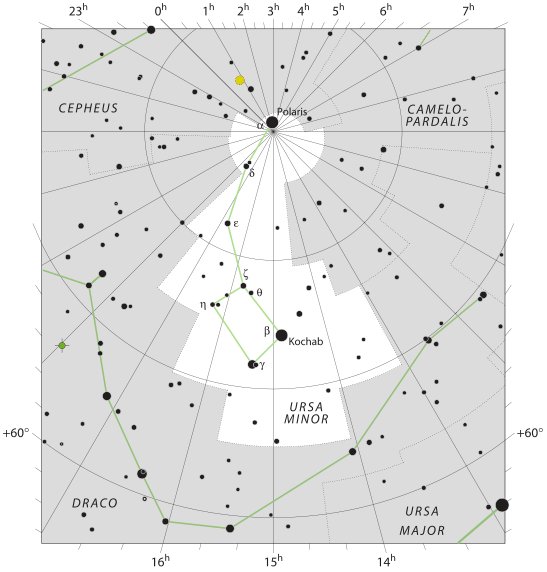
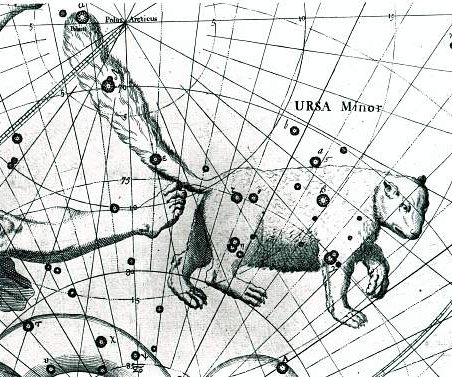
 |
 |
 |
|
e tae ai
ihe tagata hakakaikai toki* tae ai
ihe tagata tua tino e hiti
* Jaussen had
first here written kua kake -
cfr Ba4-31. |
|
... Tu'i Tofua was the son of
Vakafuhu. His mother was
Langitaetaea, but she was only
one of the many young women whom
Vakafuhu had living behind the
fences of his dwelling. When Tu'i
Tofua grew he was given the
first-born sons of all the wives for
his companions, and they all used to
play sika outside the
enclosure of Vakafuhu. They
made their sika of
clean-peeled sticks and threw them
in turn
along the ground, they glanced them
off a mound and each one tried to
make the longest throw.
One day while
Vakafuhu was sleeping off a
kava-drinking those boys were
playing their game outside, and
Tu'i Tofua threw his sika.
Then indeed the enormous strength of
Tu'i Tofua made that sika
fly over the fences into his
father's place.
It landed where
the women were and they all began to
giggle, those girls, and shriek and
laugh. They did this because they
wanted that handsome youth to come
among them, they desired him. More
than his father they desired him.
They fell with joy upon the sika
of their master's son, and snapped
it. When he came inside to get it
back they called out things that
made him embarrased. 'Haven't you
got another long thing there,
Tu'i?' those women said. 'This
one's broken.' And they put their
hands across their faces and they
laughed ... |
|
Ba4-26 (150) |
Ba4-27 |
Ba4-28 |
|
CLOSE TO THE FULL MOON: |
|
Al Zubānā-14a (Claws) /
Visakha-16 (Forked) /
Root-3 (Badger)
ZUBEN ELGENUBI (Southern Claw) =
α
Librae
(224.2),
ξ
Bootis,
ο
Lupi (224.5) |
KOCHAB (Kakkab, Babylonian for Star)
= β Ursae Min.
(225.0),
ξ Librae (225.7) |
KE KWAN (Cavalry Officer) =
β
Lupi
(226.3),
KE KWAN =
κ
Centauri (226.4), ZUBEN ELAKRIBI
(Claw of the Scorpion) =
δ
Librae
(226.8),
π¹
Oct.
(226.9)
*185.0 = *226.4 - *41.4 = "Sept 22
(265) = equinox |
|
Oct 31 (304) |
Nov 1 (Samhain) |
2
(488 - 182 = 306) |
|
AUG 28 |
29 |
30 (242 = 424 - 182) |
|
CLOSE TO THE SUN: |
|
May 1 (Beltane) |
2
(487 = 423 + 64) |
3
(123 = 488 - 365) |
|
Bharani-2 (Yoni) /
Stomach-17 (Pheasant)
π
Arietis (41.2),
MIRAM (Next to the Pleiades) = η
Persei
(41.3),
BHARANI = 41 Arietis (41.4),
τ²
Eridani,
σ
Arietis (41.7)
*0.0 = *41.4 - *41.4 |
TA LING (Great
Mound) = τ Persei (42.4)
*1.0 = *42.4 - *41.4 |
ρ
Arietis (43.0),
GORGONEA SECUNDA =
π
Persei
(43.5),
ACAMAR (End of the River) =
θ
Eridani
(43.6),
ε
Arietis (43.7),
λ
Ceti (43.9)
DENEBOLA (β Leonis) |
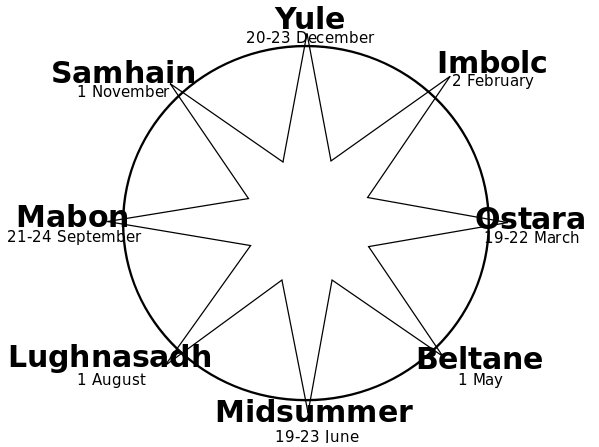 |
|
FEBR 26 (57) |
27 |
28 (424 = 365 + 59) |
...
From Bharani (May 1) to Alcyone in the Pleiades (May 16) there
were 15 days. Which implies that in May 16 the Northern Fly
asterism (Musca Borealis) would have returned to
visibility (after having been too close to the blinding rays
from the rising Sun), signifying that the Sun now had reached
Alcyone ...
The complications are great and I have
therefore decided to separate the discussion
regarding the glyphs and the comments of
Metoro (and of Bishop Jaussen) from the
presentation of the stars - which instead will be
summarized farther down below. There are 5
pregnant persons:
|
 |
1 |
 |
3 |
 |
3 |
 |
 |
|
Ba4-27 (151) |
Ba4-29 (153) |
Ba4-33 (157) |
Ba4-37 (161) |
Ba4-38 |
|
12 |
We should notice the break at the center of the
back in the outline of glyph number
161, which number ought
to represent a 'change of sex' from warlike male to
fruitful φmale.
... When this tremendous task
had been accomplished Atea took a third
husband, Fa'a-hotu, Make Fruitful. Then
occurred a curious event. Whether Atea
had wearied of bringing forth offspring we are
not told, but certain it is that Atea and
her husband Fa'a-hotu exchanged sexes.
Then the [male] eyes of Atea glanced down
at those of his wife Hotu and they begat
Ru. It was this Ru who explored
the whole earth and divided it into north,
south, east, and west ...
The limb in front disappears and will be
replaced in form of the left leg of tagata
at May 15:
|
 |
2 |
 |
|
161 |
164 |
The 'elbow ornament' probably represents the
'projecting member in front'.
... In Polynesia gliding flight is expressed by
lele, flight on flapping wing by kapa.
In Nuclear Polynesia kapa does not pass
into the wing sense except through the aid of a
composition member kau. In Samoan 'au
we find this to mean a stalk, a handle; in
reference to the body its sense as that of some
projecting member is exhibited in 'aualuma
(the 'au in front) as a very delicate
euphemism for the penis. So 'apa'au would
mean literally the projecting member that flaps
...
 |
 |
 |
 |
|
Ba4-29 |
Ba4-30 |
Ba4-31 |
Ba4-32 (156) |
|
CLOSE TO THE FULL MOON: |
|
Nov 3 (307) |
4 |
5 |
6 |
|
AUG 31 (60 + 183 = 243) |
SEPT 1 |
2 (245) |
3 |
|
ω Bootis (227.2),
NEKKAR (Herdsman) = β Bootis
(227.3), σ Librae (227.5), π²
Oct. (227.7),
NADLAT (Mean Little Ones) = ψ
Bootis
(227.8), π Lupi (227.9) |
15h (228.3)
ZUBEN HAKRABIM = ν Librae
(228.3), λ Lupi (228.9) |
ω
Oct. (229.3),
ι
Librae (229.6),
κ
Lupi (229.7),
ζ
Lupi (229.8) |
Al Zubānā-14b (Claws)
χ
Bootis (230.3),
PRINCEPS =
δ
Bootis
(230.6),
ZUBEN ELSCHEMALI (Northern Claw)
=
β
Librae
(230.8) |
|
CLOSE TO THE SUN: |
|
May 4 (124) |
5 |
6 |
7 |
|
MENKAR (The Nose) =
α
Ceti
(44.7) |
3h (45.7)
GORGONEA TERTIA =
ρ
Persei
(45.1),
ALGOL (The
Demon) =
β
Persei
(45.9) |
ι
Persei (46.1),
MISAM (Next to the Pleiades) =
κ
Persei
(46.2),
GORGONEA QUARTA =
ω
Persei
(46.7),
BOTEIN (Pair of Bellies) =
δ
Arietis
(46.9) |
ζ Arietis (47.7) |
|
MARCH 1 (60) |
2 |
3 |
4 |
|
|
 |
 |
 |
 |
|
Ba4-33 |
Ba4-34 |
Ba4-35 |
Ba4-36 |
|
CLOSE TO THE FULL MOON: |
|
Nov 7 |
8 |
9 |
10 (314) |
|
SEPT 4 |
5 |
6 |
7 (250) |
|
μ
Lupi,
γ
Tr. Austr.
(231.3), ο Librae (231.8) |
ο
Cor. Borealis (232.0),
δ
Lupi (232.1),
φ¹,
ν²
Lupi (232.2),
ν¹
Lupi (232.3),
ε
Lupi (232.4),
φ²
Lupi (232.5),
PHERKAD (The Dim One of the Two
Calves) =
γ
Ursae Min.
(232.6),
ε
Librae (232.7),
η
Cor. Borealis (232.8),
υ
Lupi (232.9)
*191.0 = *232.4 - 41.4 |
ALKALUROPS (The Herdsman's
Lance) =
μ
Bootis
(233.1),
ED ASICH (Male Hyena) =
ι
Draconis
(233.2) |
NUSAKAN (Pauper's Bowl) = β Cor.
Bor.
(234.0), κ¹ Apodis (234.3), ν
Bootis (234.7), ζ Librae (234.9)
|
|
CLOSE TO THE SUN: |
|
May
8 (128) |
9 |
May 10 |
11 |
|
ZIBAL
(Young Ostriches) =
ζ
Eridani (48.0),
κ
Ceti (48.9) |
τ Arietis (49.7) |
ALGENIB PERSEI = α Persei (50.0),
ο Tauri (50.2), ξ Tauri (50.8)
GIENAH (γ Corvi) |
σ Persei (51.6) |
|
MARCH 5 (64) |
6 |
7 |
8 |
|
|
 |
 |
 |
 |
|
Ba4-37 |
Ba4-38 |
Ba4-39 |
Ba4-40 (164) |
|
CLOSE TO THE FULL MOON: |
|
Nov 11 (315) |
12 |
13 |
14 |
|
SEPT 8 |
9 |
10 |
11 (254 = 71 + 183) |
|
θ Cor. Borealis (235.3), γ Lupi
(235.6),
GEMMA = α Cor. Bor.,
ZUBEN ELAKRAB = γ Librae, QIN =
δ Serpentis, ε Tr. Austr.
(235.7), μ Cor. Borealis
(235.8), υ Librae (235.9)
SIRRAH (α Andromedae) |
φ Bootis (236.2), ω Lupi, τ
Librae (236.3), ψ¹ Lupi (236.7),
ζ Cor. Borealis (236.9) |
κ
Librae (237.2),
ι
Serpentis (237.4),
ψ²
Lupi,
ρ
Oct.
(237.5), γ Cor. Borealis, η
Librae (237.7), COR
SERPENTIS = α Serpentis
(237.9)
*196.0 = *237.4 - *41.4 |
π
Cor. Borealis,
UNUK ELHAIA (Necks of the
Serpents) =
λ
Serpentis
(238.1),
CHOW =
β
Serpentis
(238.6) |
|
CLOSE TO THE SUN: |
|
May
12 (132) |
13 |
14 |
May 15 (500 = 365 + 135) |
|
No star listed (52) |
ψ
Persei (53.1)
ACRUX (α
CRUCIS) |
δ
Persei (54.7) |
Al Thurayya-27 (Many Little
Ones) /
Krittikā-3 (Nurses of
Kārttikeya) /
TAU-ONO (Six Stones)
ATIKS =
ο
Persei, RANA (Frog) =
δ
Eridani
(55.1),
CELAENO (16 Tauri), ELECTRA
(17), TAYGETA (19),
ν
Persei (55.3), MAIA (20),
ASTEROPE (21), MEROPE (23)
(55.6) |
|
MARCH 9 (68) |
10 |
11 |
12 |
The cycle of the Phoenix, rising from his ashes
(kihikihi), was 500 'years'.
... A sidelight falls upon the notions connected
with the stag by Horapollo's statement
concerning the Egyptian writing of 'A long space
of time: A Stag's horns grow out each year. A
picture of them means a long space of time.'
Chairemon (hieroglyph no. 15, quoted by Tzetzes)
made it shorter: 'eniautos: elaphos'.
Louis Keimer, stressing the absence of stags in
Egypt, pointed to the Oryx (Capra Nubiana)
as the appropriate 'ersatz', whose head was,
indeed, used for writing the word rnp =
year, eventually in 'the Lord of the Year', a
well-known title of Ptah. Rare as this modus of
writing the word seems to have been - the
Wörterbuch der Aegyptischen Sprache (eds.
Erman and Grapow), vol. 2, pp. 429-33, does not
even mention this variant - it is worth
considering (as in every subject dealt with by
Keimer), the more so as Chairemon continues his
list by offering as number 16: 'eniautos:
phoinix', i.e., a different span of time,
the much-discussed 'Phoenix-period' (ca. 500
years) ...
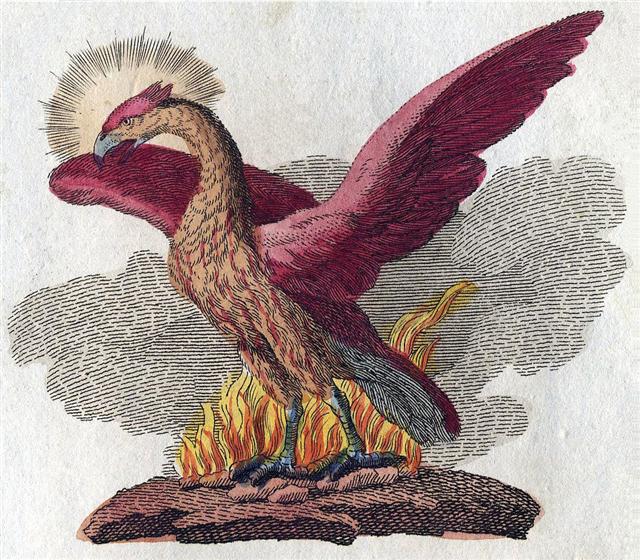
|





































